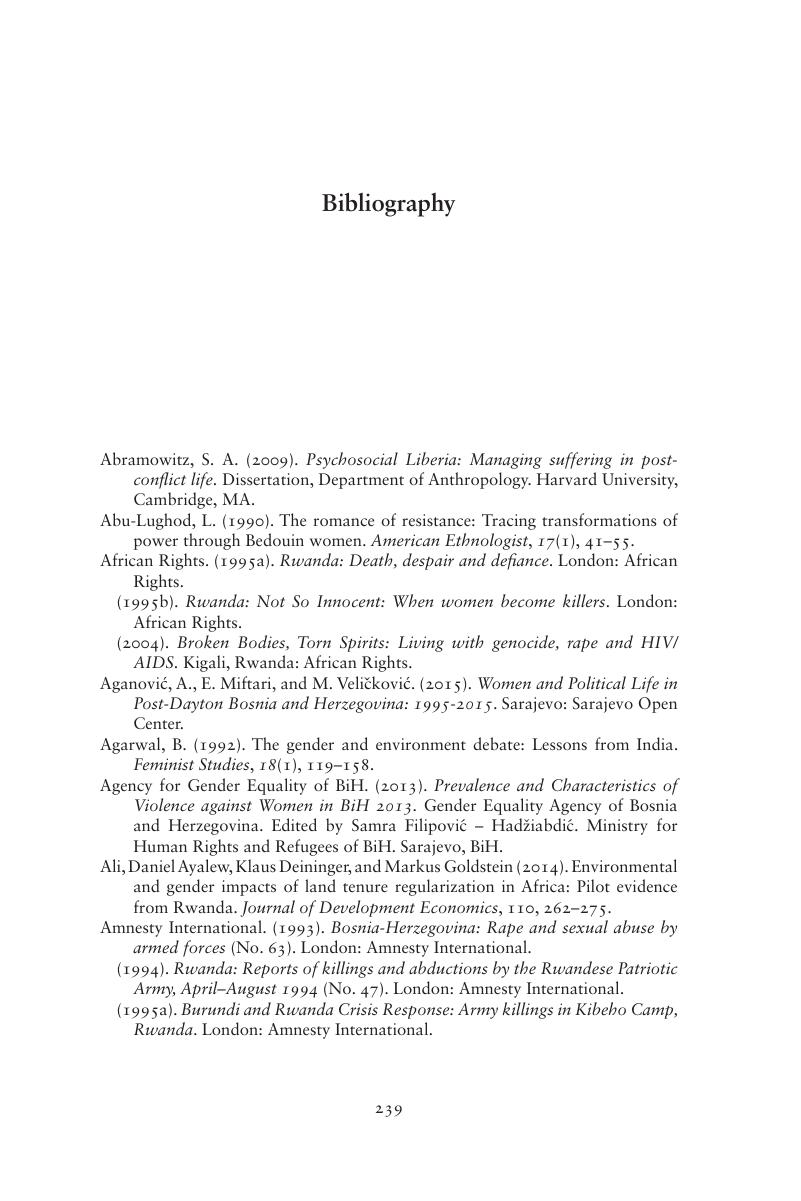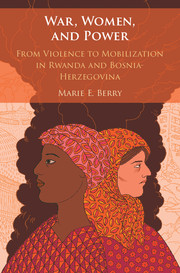Book contents
- War, Women, and Power
- War, Women, and Power
- Copyright page
- Dedication
- Epigraph
- Contents
- Figures
- Tables
- Maps
- Acknowledgments
- Cast of Characters: Rwanda
- Abbreviations
- Cast of Characters: Bosnia
- Abbreviations
- Summary
- 1 War, Women, and Power
- 2 Historical Roots of Mass Violence in Rwanda
- 3 War and Structural Shifts in Rwanda
- 4 Women’s Political Mobilization in Rwanda
- 5 Historical Roots of Mass Violence in Bosnia-Herzegovina
- 6 War and Structural Shifts in Bosnia-Herzegovina
- 7 Women’s Political Mobilization in Bosnia-Herzegovina
- 8 Limits of Mobilization
- 9 Conclusion
- Notes
- Glossary
- Bibliography
- Index
- References
Bibliography
Published online by Cambridge University Press: 09 March 2018
- War, Women, and Power
- War, Women, and Power
- Copyright page
- Dedication
- Epigraph
- Contents
- Figures
- Tables
- Maps
- Acknowledgments
- Cast of Characters: Rwanda
- Abbreviations
- Cast of Characters: Bosnia
- Abbreviations
- Summary
- 1 War, Women, and Power
- 2 Historical Roots of Mass Violence in Rwanda
- 3 War and Structural Shifts in Rwanda
- 4 Women’s Political Mobilization in Rwanda
- 5 Historical Roots of Mass Violence in Bosnia-Herzegovina
- 6 War and Structural Shifts in Bosnia-Herzegovina
- 7 Women’s Political Mobilization in Bosnia-Herzegovina
- 8 Limits of Mobilization
- 9 Conclusion
- Notes
- Glossary
- Bibliography
- Index
- References
Summary

- Type
- Chapter
- Information
- War, Women, and PowerFrom Violence to Mobilization in Rwanda and Bosnia-Herzegovina, pp. 239 - 266Publisher: Cambridge University PressPrint publication year: 2018

